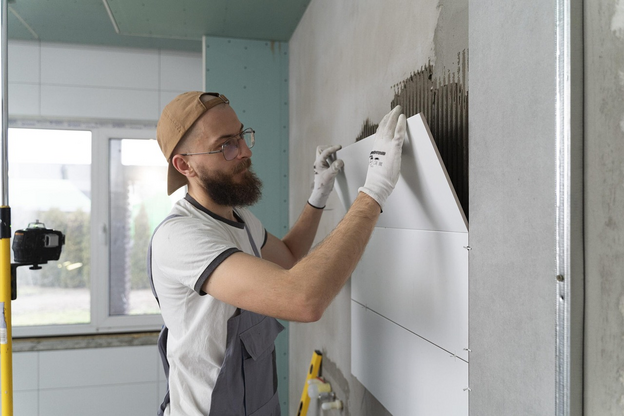
Electrical Installation Condition Reports (EICRs) represent a crucial intersection between home safety and legal compliance in residential properties. Electrical faults cause thousands of house fires annually across the UK, and these comprehensive safety inspections serve as an essential preventive measure for protecting both lives and property. Understanding the significance and requirements of domestic EICRs has become increasingly important, especially since the introduction of the Electrical Safety Standards 2020.
Understanding Domestic EICRs: Beyond Basic Safety Checks
A domestic EICR goes beyond a simple visual inspection of your property’s electrical systems. These detailed assessments, conducted by qualified electricians registered with recognised bodies like NICEIC or NAPIT, thoroughly evaluate your electrical installation’s safety and compliance with current standards. The inspection process encompasses everything from your main consumer unit to the most miniature sockets, ensuring every component meets strict safety requirements.
The comprehensive nature of these inspections reflects the complexity of modern electrical systems. As our homes increasingly rely on sophisticated electrical installations to power everything from home offices to electric vehicle charging points, the importance of proper safety certification has never been greater. Qualified inspectors utilise specialised testing equipment to assess visible components and hidden elements that could pose potential risks.
Regulatory Framework and Legal Requirements
The landscape of electrical safety regulations has evolved significantly in recent years. Current UK legislation mandates regular EICRs for rental properties, requiring landlords to obtain new certificates every five years. While not currently mandatory for owner-occupied homes, safety experts and insurance providers strongly recommend the same five-year inspection cycle. This recommendation stems from extensive data showing that regular inspections significantly reduce the risk of house electrical fires.
Property owners should understand that electrical safety regulations vary slightly across England, Scotland, and Wales, though the core requirements remain consistent. Introducing the Electrical Safety Standards 2020 increased scrutiny of rental property compliance, with substantial penalties for non-compliance. These regulations ensure uniform safety standards across all residential properties, protecting occupants and property investments.
The Inspection Process and Fault Classifications
Professional EICR inspections follow a methodical process to identify potential hazards before they become critical. During the assessment, qualified electricians examine multiple aspects of your electrical installation, including wiring conditions, earthing arrangements, and the effectiveness of safety devices. This systematic approach ensures no potential danger goes unnoticed.
When issues are identified, they’re categorised using a standardised classification system that helps property owners understand the urgency of required remedial actions:
- Code C1 (Danger Present) indicates situations where immediate action is essential. These findings represent clear and immediate risks to safety, such as exposed live wiring or severe overheating. Properties with C1 faults require immediate attention from a qualified electrician, as these issues pose immediate fire or shock risks.
- Code C2 (Potentially Dangerous) identifies conditions that, while not immediately dangerous, could become hazardous under fault conditions. These might include inadequate earthing or overloaded circuits. Property owners must address these issues within 28 days to maintain safety compliance.
- Code C3 (Improvement Recommended) suggests improving electrical safety beyond minimum requirements. While not mandatory, addressing these recommendations often improves safety and property value. Improvements might include upgrading to more modern safety devices or enhancing circuit protection.
Preventing Fire Risks Through Regular Assessment
The relationship between proper electrical maintenance and fire prevention is well-documented by safety organisations across the UK.
Regular EICRs are vital in identifying potential fire hazards before they develop into serious threats. As this recent insight from a domestic EICR expert highlights, older wiring systems may not comply with current safety standards, underscoring the importance of regular inspections.
This preventive approach proves particularly valuable in older properties, where ageing electrical systems may not meet current safety standards.
Common issues identified during inspections include deteriorating insulation, overloaded circuits, and inadequate safety devices. If left unaddressed, each of these conditions can contribute to fire risks. Through early detection and remediation, property owners can significantly reduce their exposure to electrical fire hazards while maintaining their property’s value and insurability.
Cost Implications and Value Considerations
While some property owners view EICR inspections as unnecessary, this perspective overlooks the significant financial benefits of regular electrical assessment. The cost of an EICR varies depending on property size and complexity but typically represents a modest investment compared to the potential expenses of electrical fires or emergency repairs.
Insurance providers increasingly recognise the value of current EICRs, often offering preferential rates to properties with up-to-date certificates. Additionally, properties with documented electrical safety histories typically command higher market values and attract more interested buyers or tenants. This enhanced marketability often outweighs the initial inspection costs, making regular EICRs a sound investment in property maintenance.
Remedial Actions and Safety Improvements
When an EICR identifies safety concerns, property owners must understand the appropriate remedial actions. The nature and urgency of these improvements directly correlate with the fault classifications identified during the inspection. Electrical Safety First, a leading safety organisation, emphasises that prompt attention to remedial work prevents minor issues from escalating into significant hazards.
Professional remediation typically follows a structured approach, beginning with immediately addressing any C1 (danger present) issues. Qualified electricians document all remedial work thoroughly, providing property owners with detailed records of improvements and repairs. This documentation proves invaluable for future inspections and property transactions and demonstrates a commitment to maintaining high safety standards.
Selecting Qualified Electrical Inspectors
The accuracy and value of an EICR depend heavily on the competence of the inspector conducting the assessment. Only electricians registered with recognised governing bodies like NICEIC or NAPIT possess the necessary qualifications and testing equipment to perform comprehensive inspections. These professionals maintain current knowledge of electrical regulations and safety standards through regular training and certification.
When selecting an inspector, property owners should verify their technical qualifications and their specific experience with domestic EICR assessments. Experienced inspectors bring valuable insights into common property-specific issues and can often provide practical advice for maintaining electrical safety between inspections.
Long-term Safety Management
Effective electrical safety management extends beyond periodic inspections to ongoing monitoring and maintenance. Property owners should comprehensively understand their electrical systems and establish regular safety checks between formal EICR assessments. This proactive approach helps identify potential issues early, often before they become serious safety concerns.
Regular visual inspections of electrical fixtures and fittings can reveal early warning signs of potential problems. Changes in socket performance, unusual sounds from electrical installations, or fluctuations in circuit performance indicate developing issues that warrant professional attention. Property owners create a valuable history of their electrical system’s performance and maintenance by maintaining detailed records of these observations and any subsequent actions.
Future-Proofing Your Property
As technology advances and electrical demands increase, future-proofing your property’s electrical systems becomes increasingly important. Modern homes require sophisticated electrical installations to support everything from home automation systems to electric vehicle charging points. Current EICR assessments should consider these evolving needs, ensuring your electrical infrastructure can safely accommodate future technologies.
Investing in electrical system upgrades identified through EICR inspections often proves cost-effective in the long term. Properties with modern, well-maintained electrical installations typically command higher market values and attract quality tenants or buyers. Furthermore, these improvements often result in more efficient energy usage, reducing operating costs and environmental impact.
To Summarise
Domestic EICRs represent far more than a regulatory requirement or safety checkbox. They serve as a fundamental tool for protecting property investments and, more importantly, ensuring occupant safety. By understanding and acting upon EICR findings, property owners demonstrate their commitment to maintaining safe, compliant, and valuable properties.
The role of EICRs in preventing home fires continues to evolve alongside technological advancements and changing safety standards. Regular inspections, prompt attention to remedial actions, and ongoing safety awareness combine to create a robust framework for electrical safety management. This comprehensive approach protects against immediate hazards and contributes to the long-term sustainability and value of residential properties.




 POSTED BY
POSTED BY 

